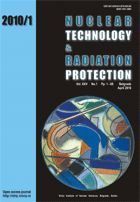
X-RAY SPECTROSCOPY STUDY OF ThO2 AND ThF4
Pages: 8-12
Authors: Anton Yu. Teterin, Mikhail V. Ryzhkov, Yury A. Teterin, Ernst Z. Kumaev, Konstantin I. Maslakov, Kirill E. Ivanov, Victor V. Fedorenko, Lyudmila V. Elohina
Abstract
The structure of the X-ray photoelectron, X-ray O(F)Ka-emission spectra from ThO2 and ThF4 as well as the Auger OKLL spectra from ThO2 was studied. The spectral structure was analyzed by using fully relativistic cluster discrete variational calculations of the electronic structure of the ThO812–(D4h) and ThF84–(C2) clusters reflecting thorium close environment in solid ThO2 and ThF4. As a result it was theoretically found and experimentally confirmed that during the chemical bond formation the filled O(F)2p electronic states are distributed mainly in the binding energy range of the outer valence molecular orbitals from 0-13 eV, while the filled O(F)2s electronic states – in the binding energy range of the inner valence molecular orbitals from 13-35 eV. It was shown that the Auger OKLL spectral structure from ThO2 characterizes not only the O2p electronic state density distribution, but also the O2s electronic state density distribution. It agrees with the suggestion that O2s electrons participate in formation of the inner valence molecular orbitals, in the binding energy range of 13-35 eV. The relative Auger OKL2-3L2-3 peak intensity was shown to reflect quantitatively the O2p electronic state density of the oxygen ion in ThO2.
Key words: X-ray photoelectron spectra, thorium oxide, thorium tetrafluoride, outer and inner valence molecular orbitals
FULL PAPER IN PDF FORMAT (451 KB)
Last updated on September, 2010
